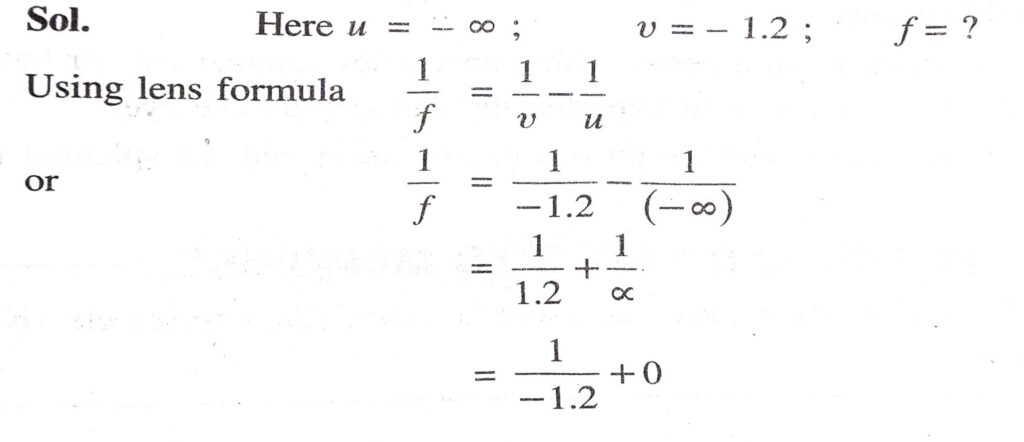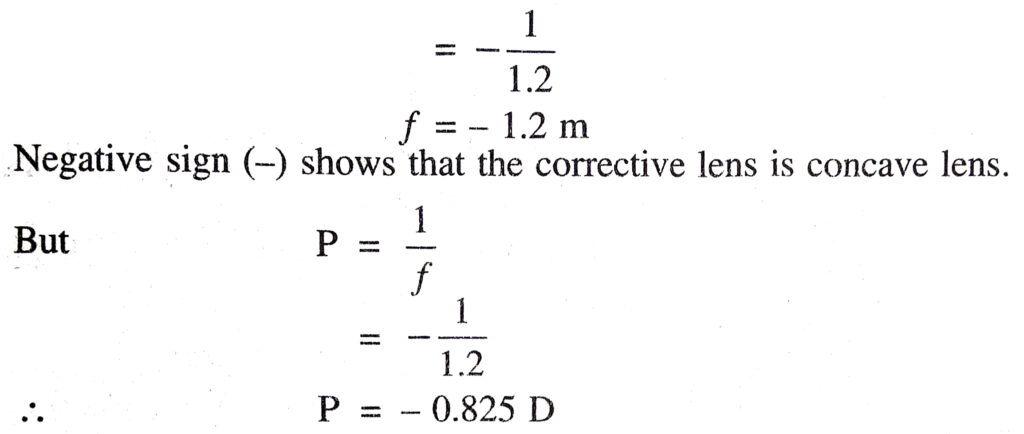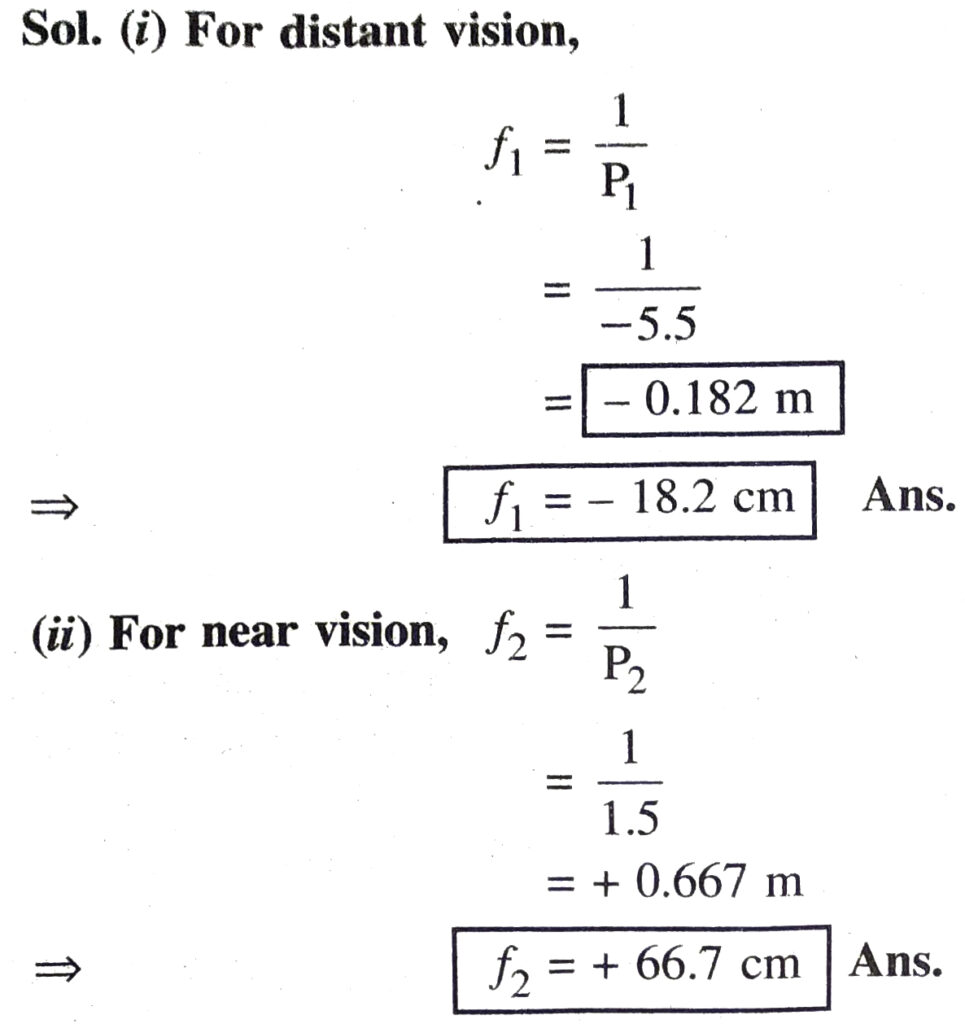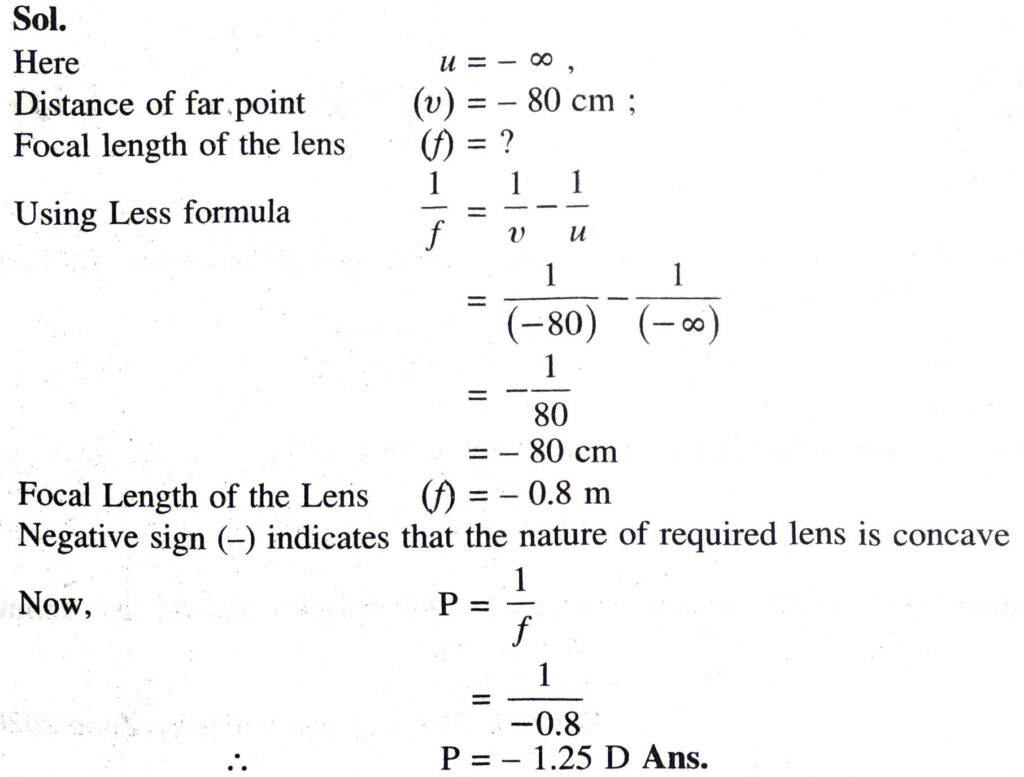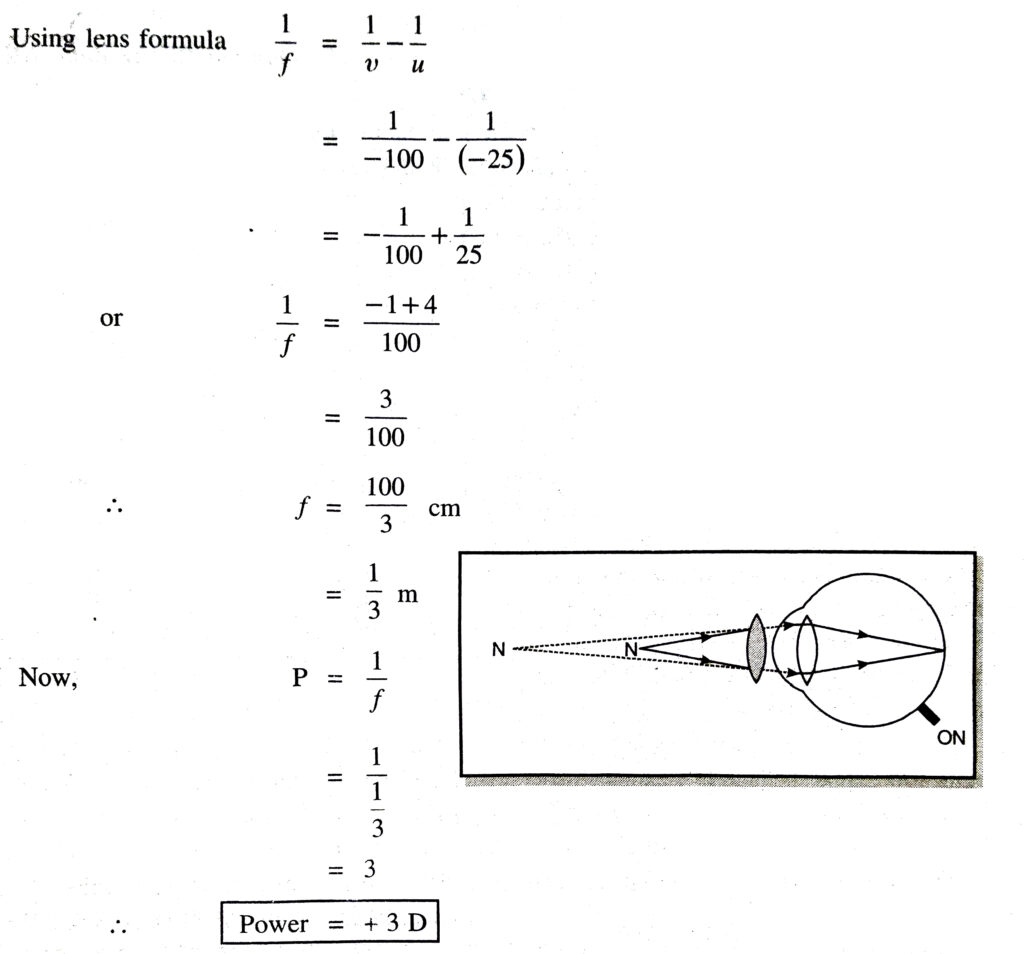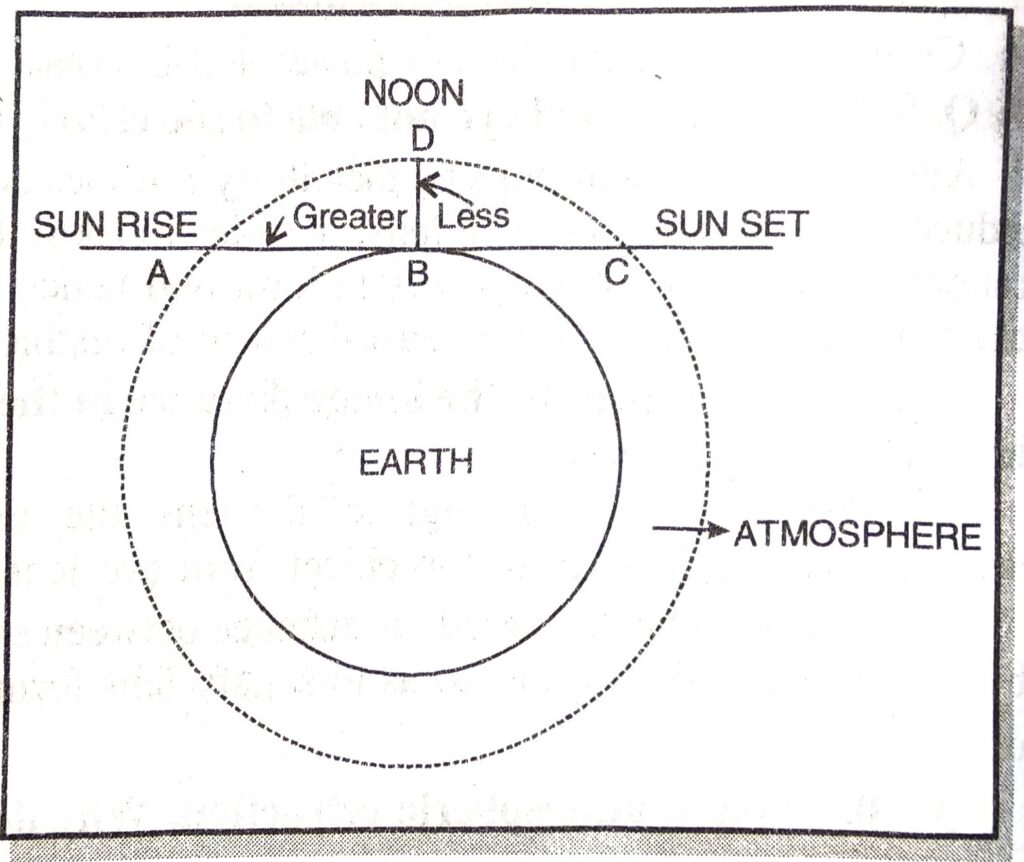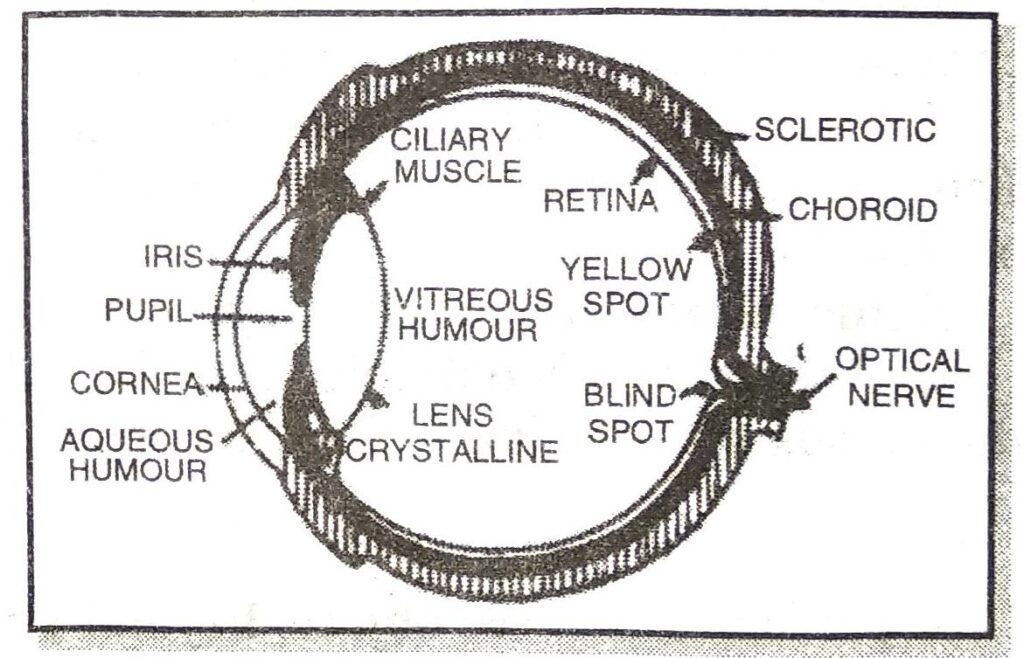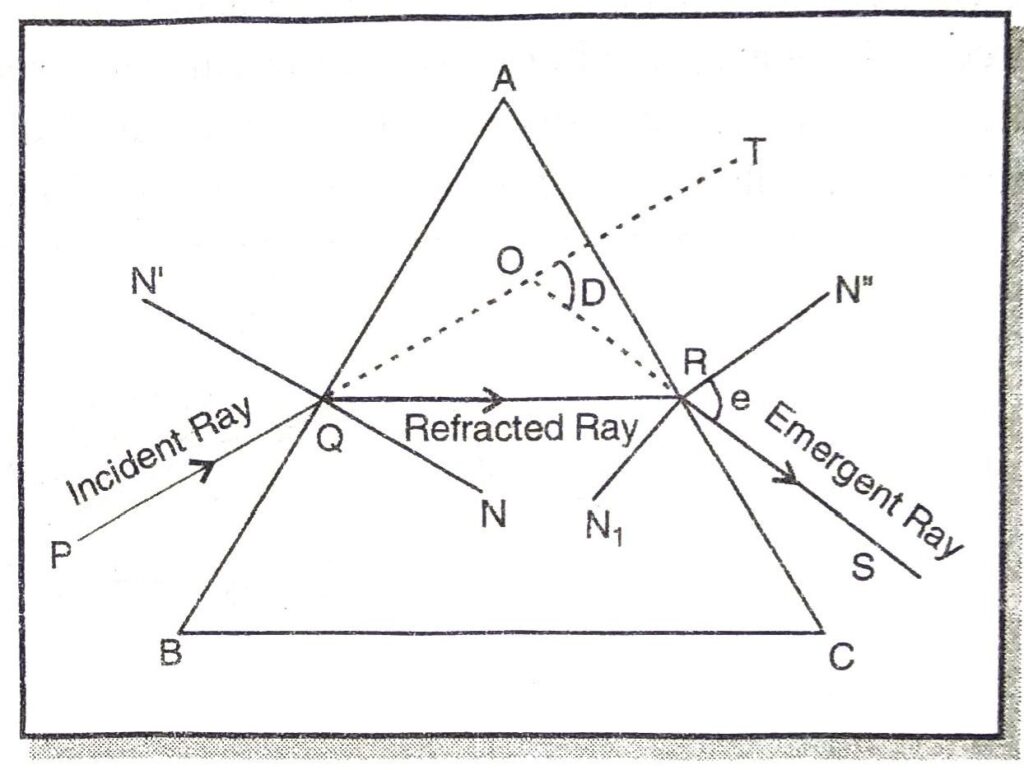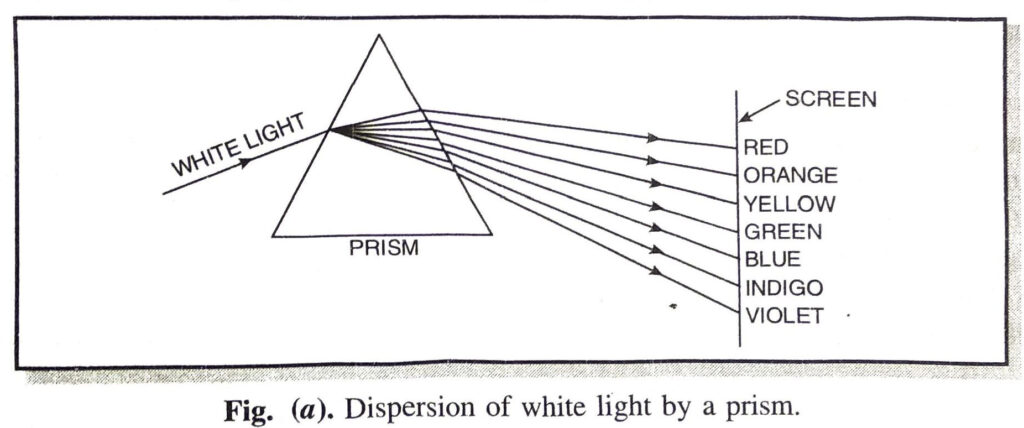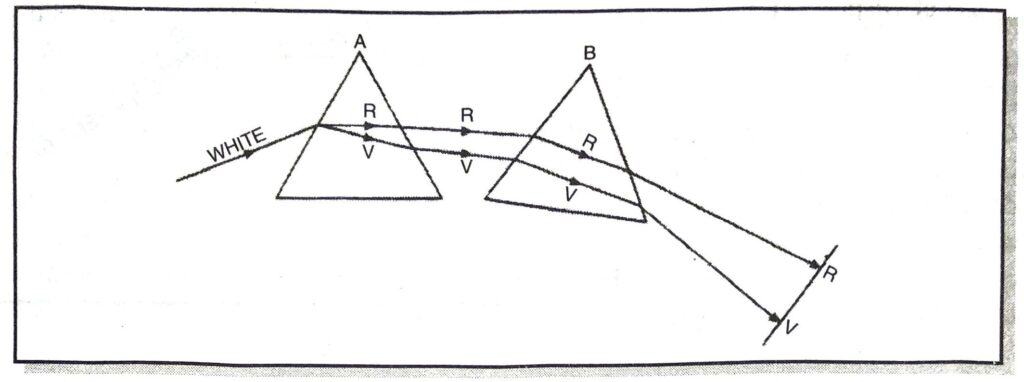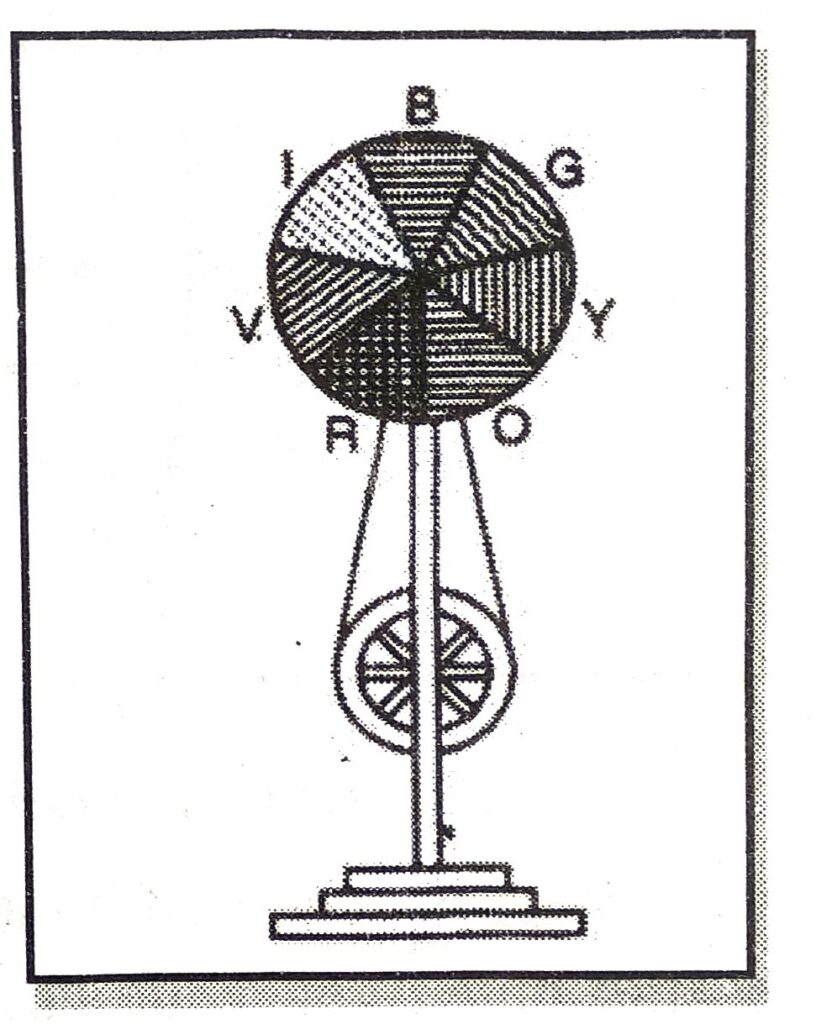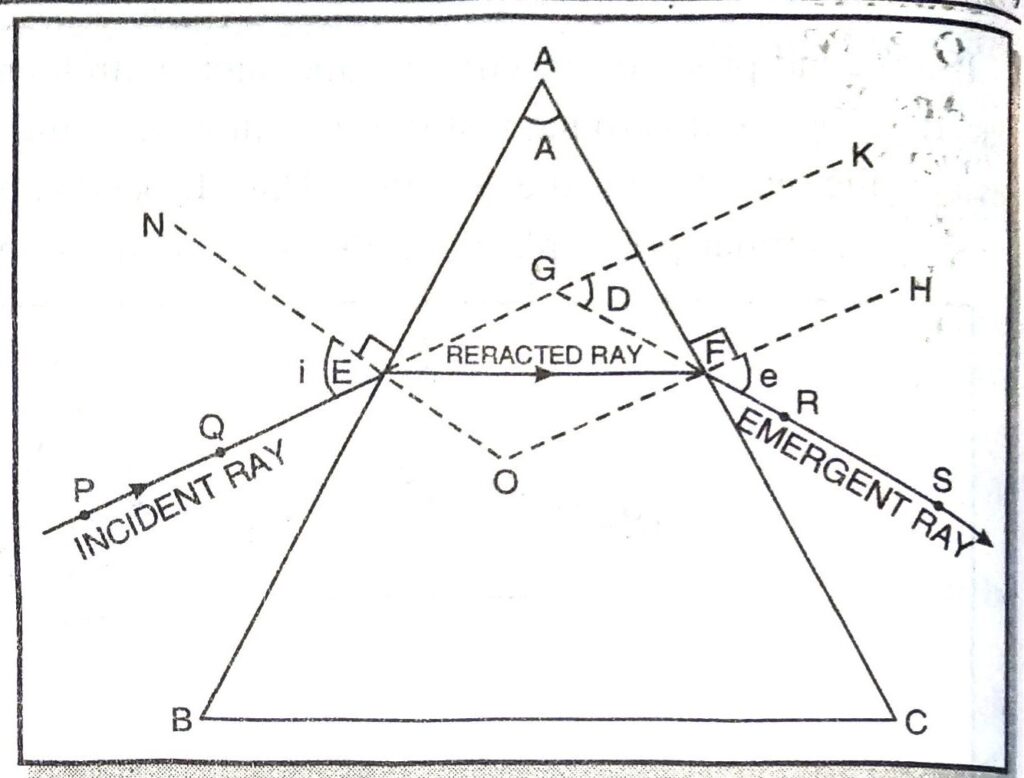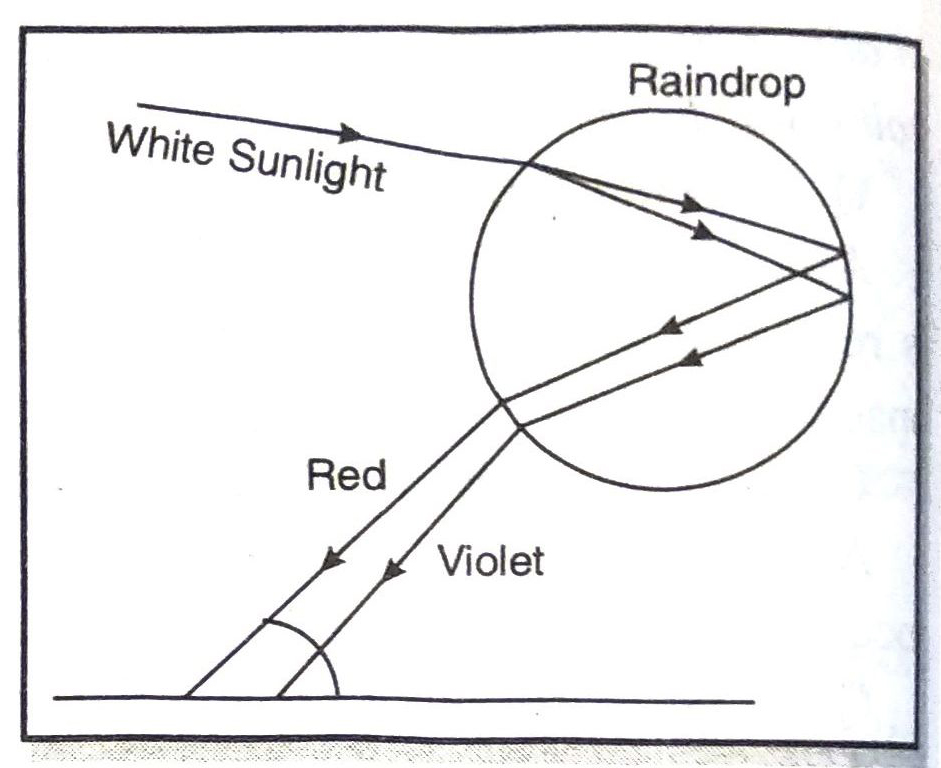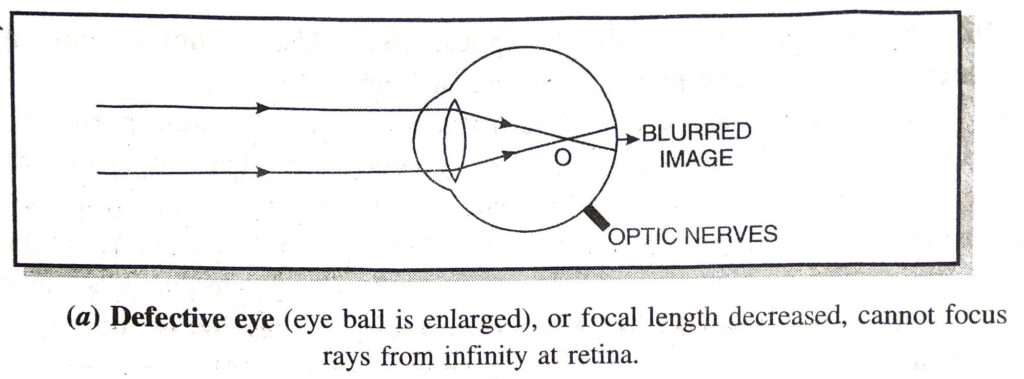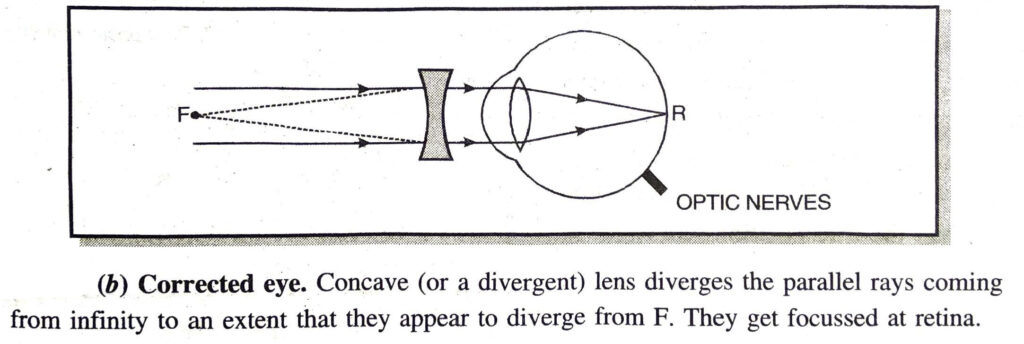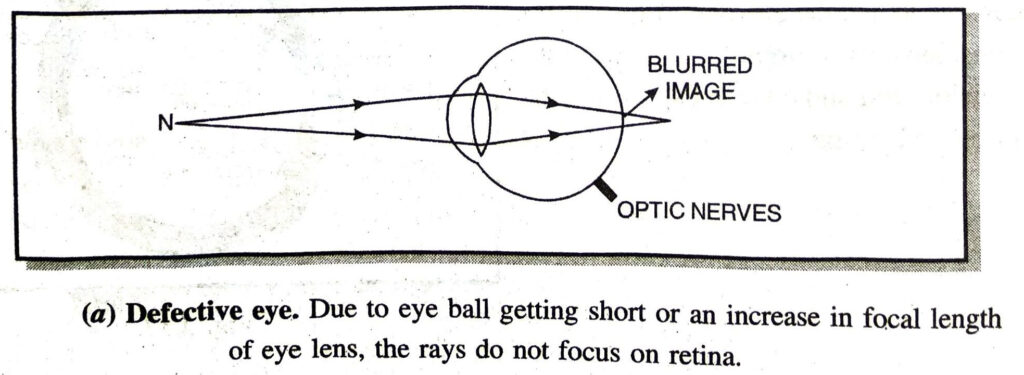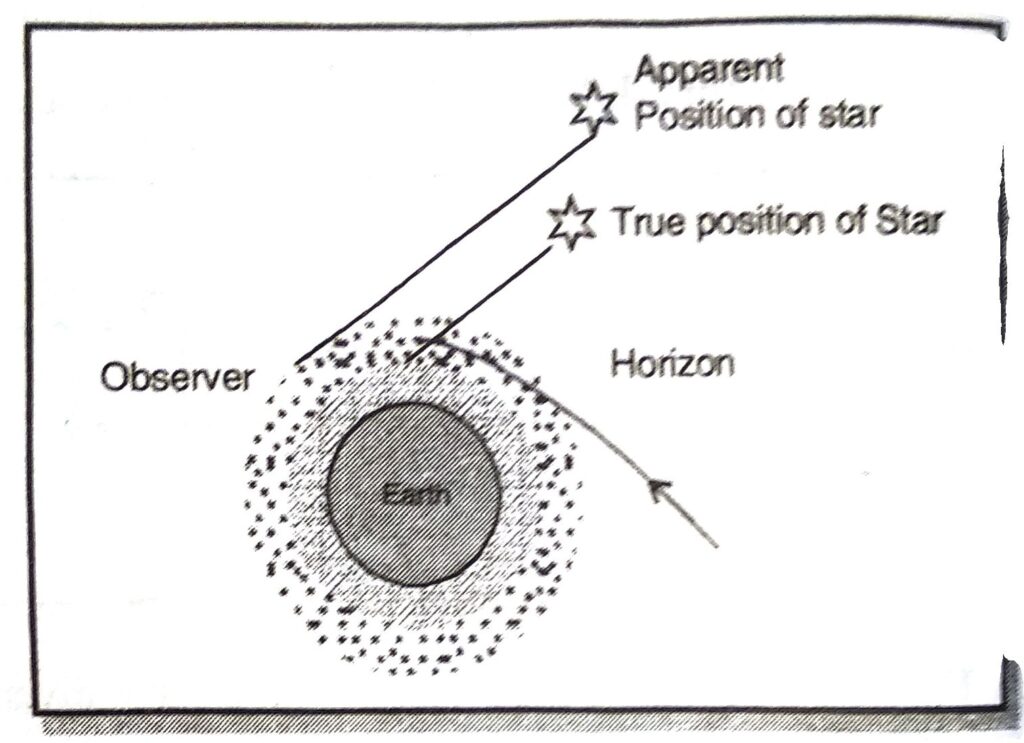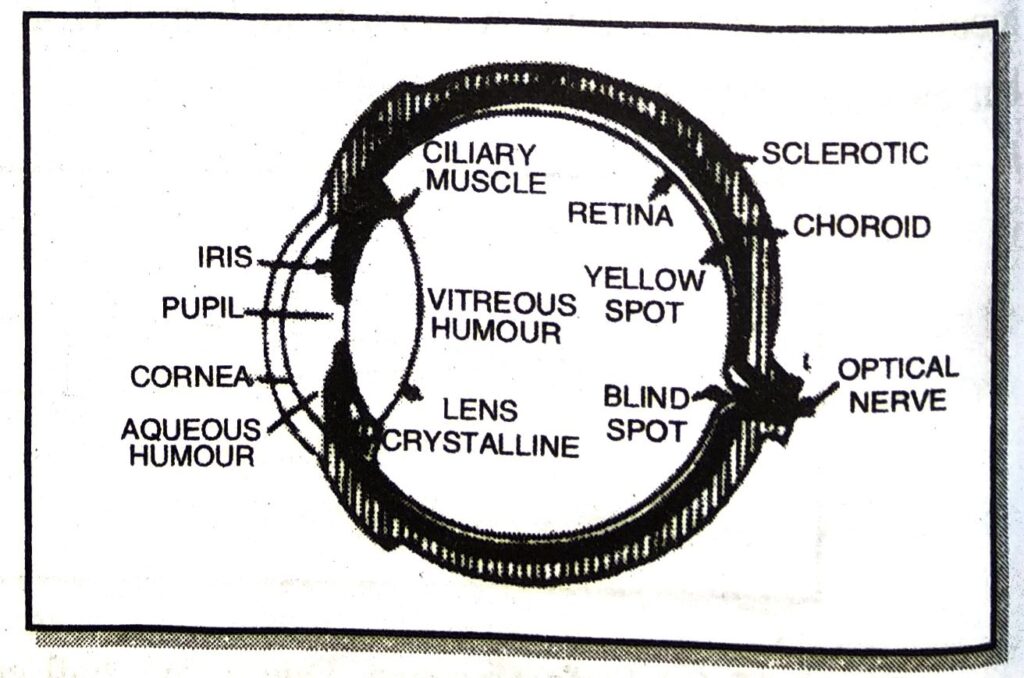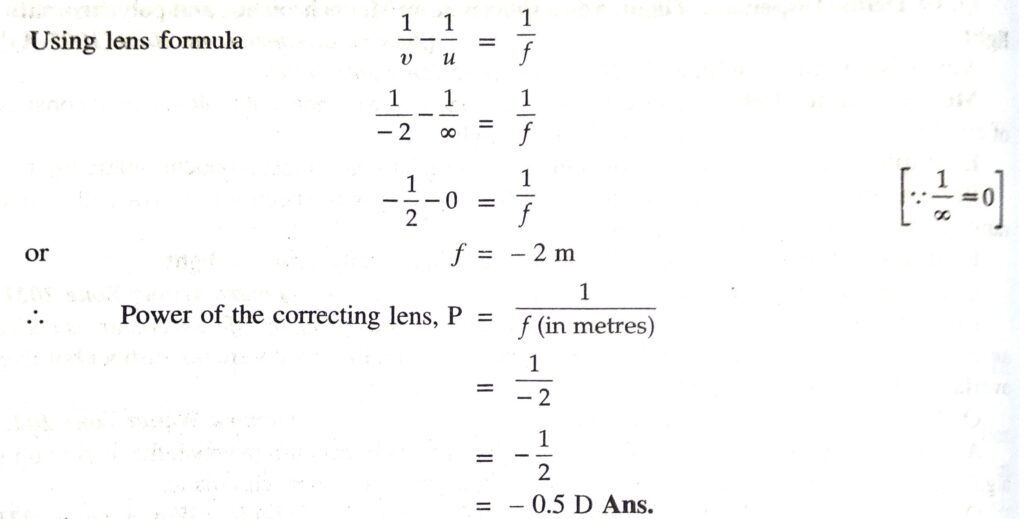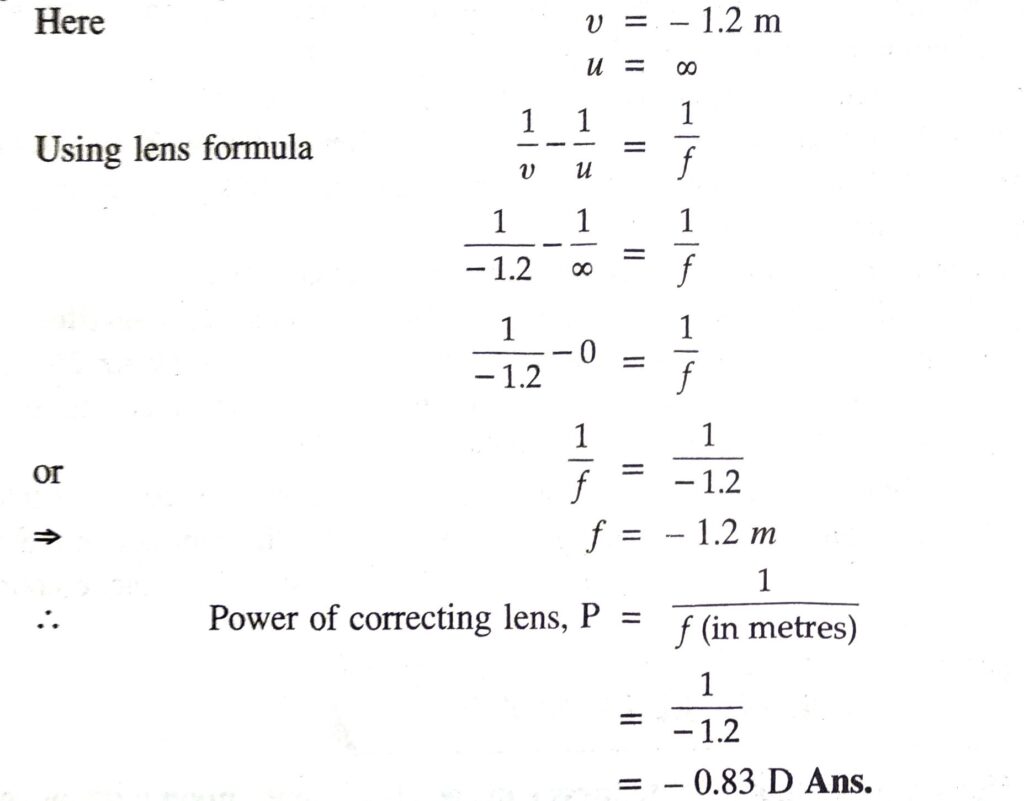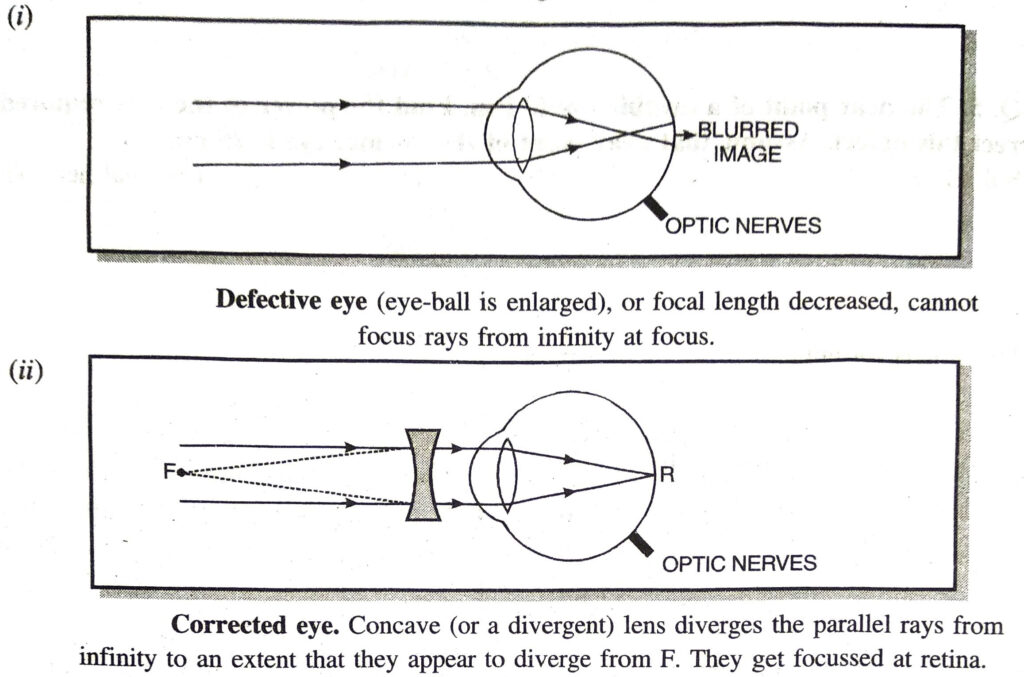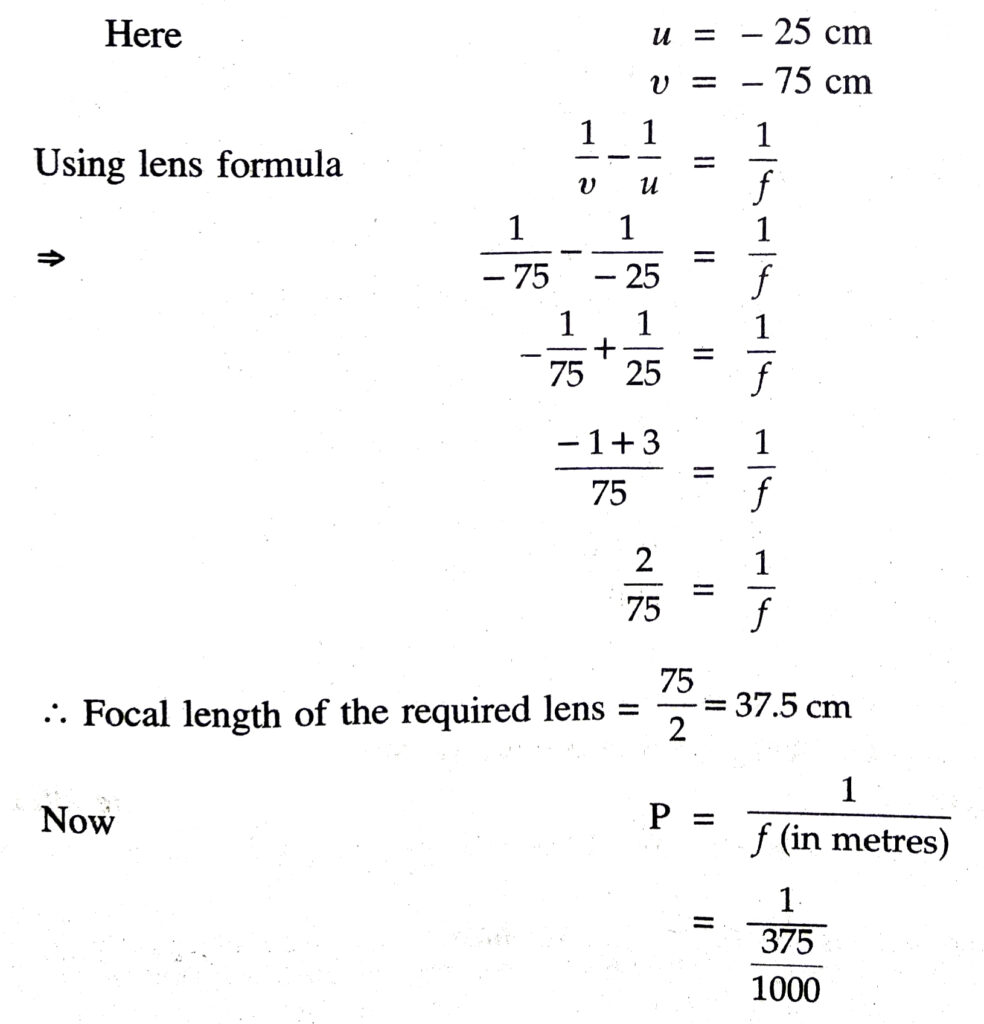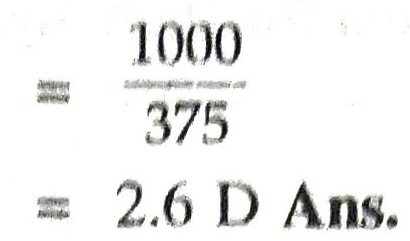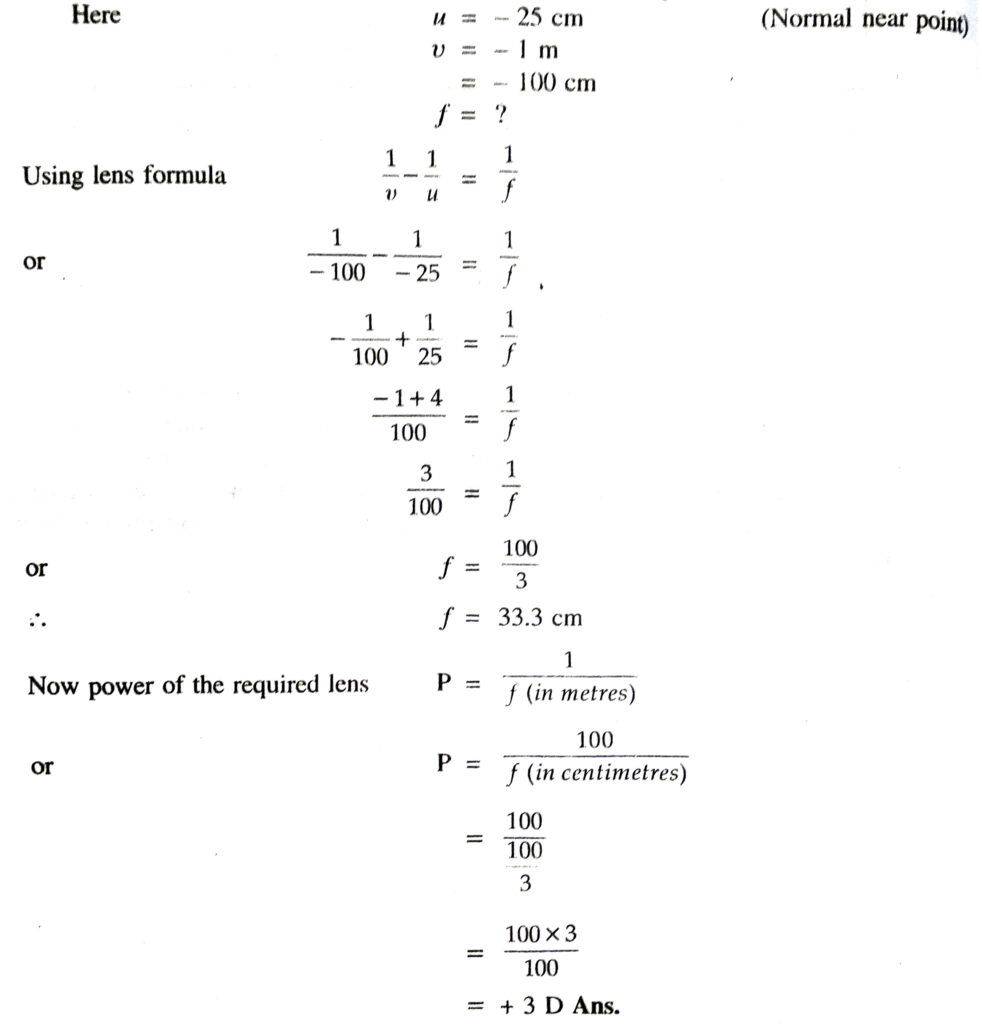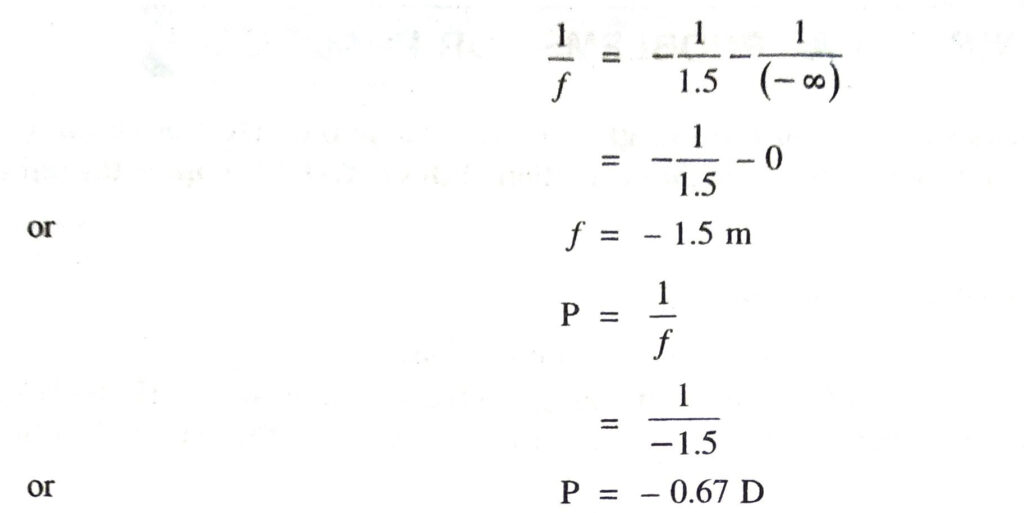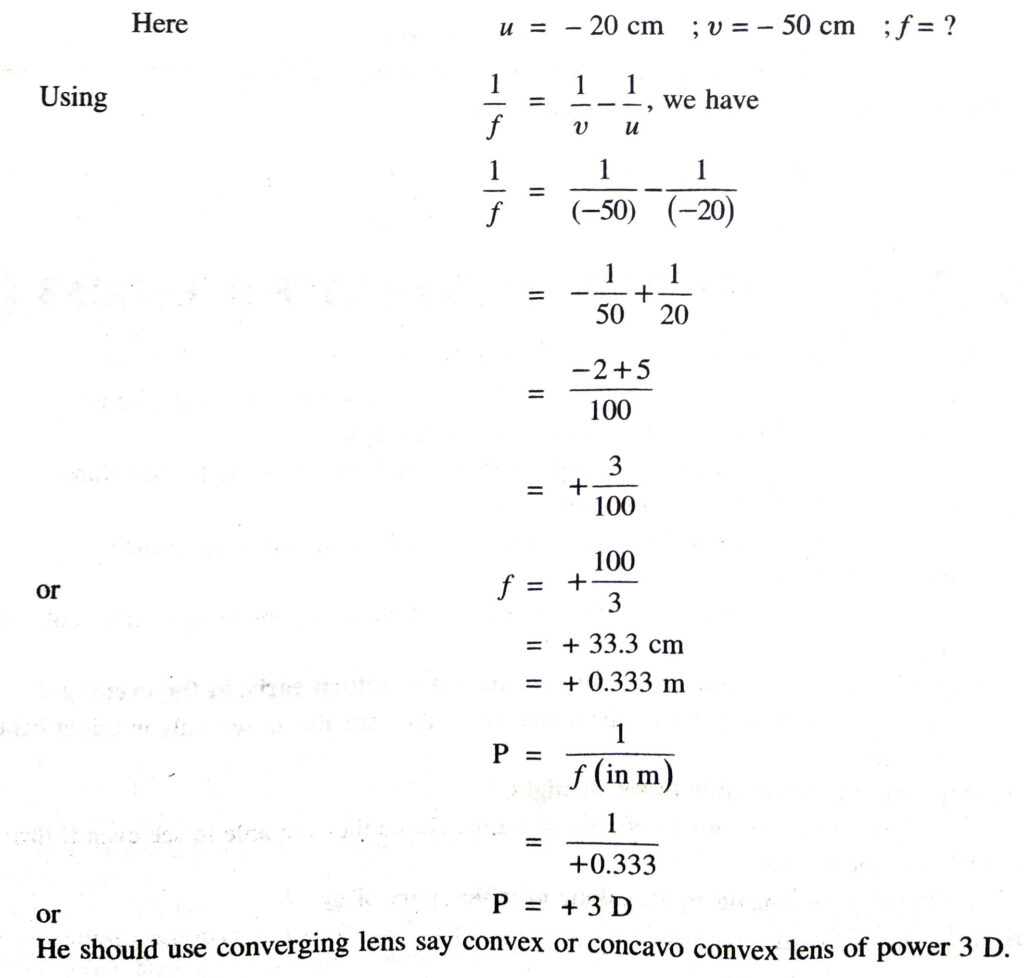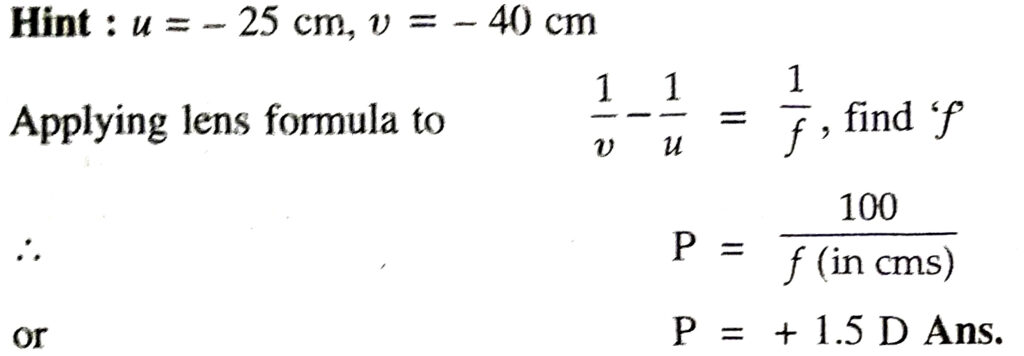JKBOSE 10th Class Science Solutions Chapter 2 The Human Eye and Colourful World
JKBOSE 10th Class Science Solutions Chapter 2 The Human Eye and Colourful World
Jammu & Kashmir State Board JKBOSE 10th Class Science Solutions
J&K class 10th Science The Human Eye and Colourful World Textbook Questions and Answers
BASIS AND BASICS
◆ Eye is the most useful natural optical instrument.
◆ Distance between near and far point is called accommodation.
◆ Least distance of distinct vision for normal eye is 25 cm.
◆ Retina is the most sensitive part of the eye.
◆ Rods present on the retina are sensitive to intensity of light and cones are sensitive to colours of Light.
◆ Most sensitive part of the retina where the image of object is formed is called yellow spot.
◆ Focal length of eye lens can be varied with the help of ciliary muscles.
◆ The defects of the eye are : myopia, hypermetropia, presbyopia, astigmatism, and colour blindness.
◆ Colour blindness cannot be cured while myopia can be corrected by using a diverging (say a concave) lens of suitable focal length.
Hypermetropia can be corrected by using a converging (say a convex) lens of suitable focal length. For correcting presbyopia, bifocal lenses are required. Astigmatism is corrected by using cylindrical lens.
◆ Eyes can be donated after death. Even a person using spectacles, contact lens or have been operated for cataract or suffering from hypertension can also donate eyes.
◆ Cornea of dead persons’ eye is removed within 6 hours of death and transplanted in blind persons’ eye.
IMPORTANT TERMS AND FACTS TO MEMORISE
- Accommodation. It is the distance between near and far point. Eye can see clearly between near and far point.
- Nearest point upto which the eye can see clearly is called near point and most distant point upto which the eye can see is called far point.
- For normal eye the near point is at a distance of 20 cm from eye and far point is at infinity.
- Focal length of eye lens can be changed by the action of ciliary muscles.
- Rod-shaped cells on retina are sensitive to light. Rods convert intensity of light to electric impulses.
- Cone-shaped cells on retina are sensitive to colours. There are three types of cones, one each sensitive to red, blue and green.
TEXT BOOK QUESTIONS (SOLVED)
Q. 1. What is meant by power of accommodation of the eye ?
Or
Define Power of accommodation.
Ans. Power of accommodation of eye. It is the ability of the eye lens to adjust its focal length to see various objects lying at different distances. The minimum distance upto which a normal eye can see clearly is called near point. For normal eye, near point is about 20 cm. The maximum distance upto which the eye can see clearly is called far point. The distance between near point and far point is also called accommodation.
Q. 2. A person with myopic eye cannot see objects beyond 1.2 m distinctly. What should be the type of the corrective lens used to restore proper vision ?
Person should wear spects of power – 0.825 D Ans.
Q. 3. What is the far point and near point of human eye with normal vision ?
Ans. Far point. It is the distance of most distant point upto which a person can see object distinctly. It is infinity for normal vision.
Near point. It is distance of nearest point beyond which a person can see distinctly. It is 25 cm for normal vision.
Q. 4. A student has difficulty in reading the blackboard while sitting in the last row. What could be the defect the child is suffering from? How could it be corrected ?
Ans. Student is suffering from myopia (or shortsightedness). This defect can be corrected by using spectacles having diverging (say concave) lens of suitable focal length.
TEXT BOOK EXERCISES (SOLVED)
Q. 1. The human eye can focus object at different distances by adjusting the focal length of the eye lens. This is due to :
(a) presbyopia
(b) accommodation
(c) near-sightedness
(d) far-sightedness.
Ans. (b) accommodation.
Q. 2. The human eye forms the image of an object at its :
(a) cornea
(b) iris
(c) pupil
(d) retina.
Ans. (d) retina.
Q. 3. The least distance of distinct vision for a young adult with normal vision is about :
(a) 25 m
(b) 2.5 cm
(c) 25 cm
(d) 2.5 m.
Ans. (c) 25 cm.
Q. 4. The change in focal length of an eye lens is caused by the action of the :
(a) pupil
(b) retina
(c) ciliary muscles
(d) iris.
Ans. (c) ciliary muscles.
Q. 5. A person needs a lens of power – 5.5 D for correcting his vision. For correcting his near vision, he needs a lens of power + 1.5 D. What is the focal length of lens required for correcting (i) distant vision and (ii) near vision ?
Q. 6. The far point of a myopic person is 80 cm in front of the eye. What is the nature and power of the lens required to correct the problem ?
Q. 7. Make a diagram to show how hypermetropia is corrected. The near point of hypermetropic eye is 1 m. What is the power of the lens required to correct this defect? Assume that the near point of normal eye is 25 cm.
Convex (convergent lens of power + 3 D Ans.
Q. 8. Why is a normal eye not able to see clearly the objects placed closer than 25 cm ?
Ans. For seeing near objects, the ciliary muscles contract to make the lens thicker so as to reduce the focal length of eye lens, in order to form the image on the retina. Ciliary muscles cannot be contracted beyond certain limit and hence we cannot see clearly the objects lying closer than 25 cm, called the least distance of distinct vision.
Q. 9. What happens to the image distance in the eye when we increase the distance of an object from the eye ?
Ans. For a fixed focal length of the lens, the distance of image from the lens (i.e., v) decreases as the distance of the object from eye lens (i.e., u) is increased. Since u cannot be decreased (as distance between eye lens and retina is fixed), fis decreased by action of ciliary muscles so as to satisfy lens formula in accordance with increased value of u.
Q. 10. Explain atmospheric refraction. Why do stars twinkle ?
Or
Why do stars twinkle ?
Or
Why do stars appear twinkling while the planets do not appear twinkling ?
Ans. Twinkling of the star is due to refraction of light from stars through atmosphere. The stars emit their own light. The light coming from the stars on entering the earth’s atmosphere undergoes refraction continuously at each layer of atmosphere having different density, before it reaches the earth. The stars are very much distant objects and may be considered as point sources. The refractive index of the air changes from time to time due to change of density of air. Due to change of the optical density of earth’s atmosphere, the path of rays from stars continuously changes. The apparent positions of the stars continuously change due to change in refractive index of the atmosphere. Thus the stars appear to twinkle.
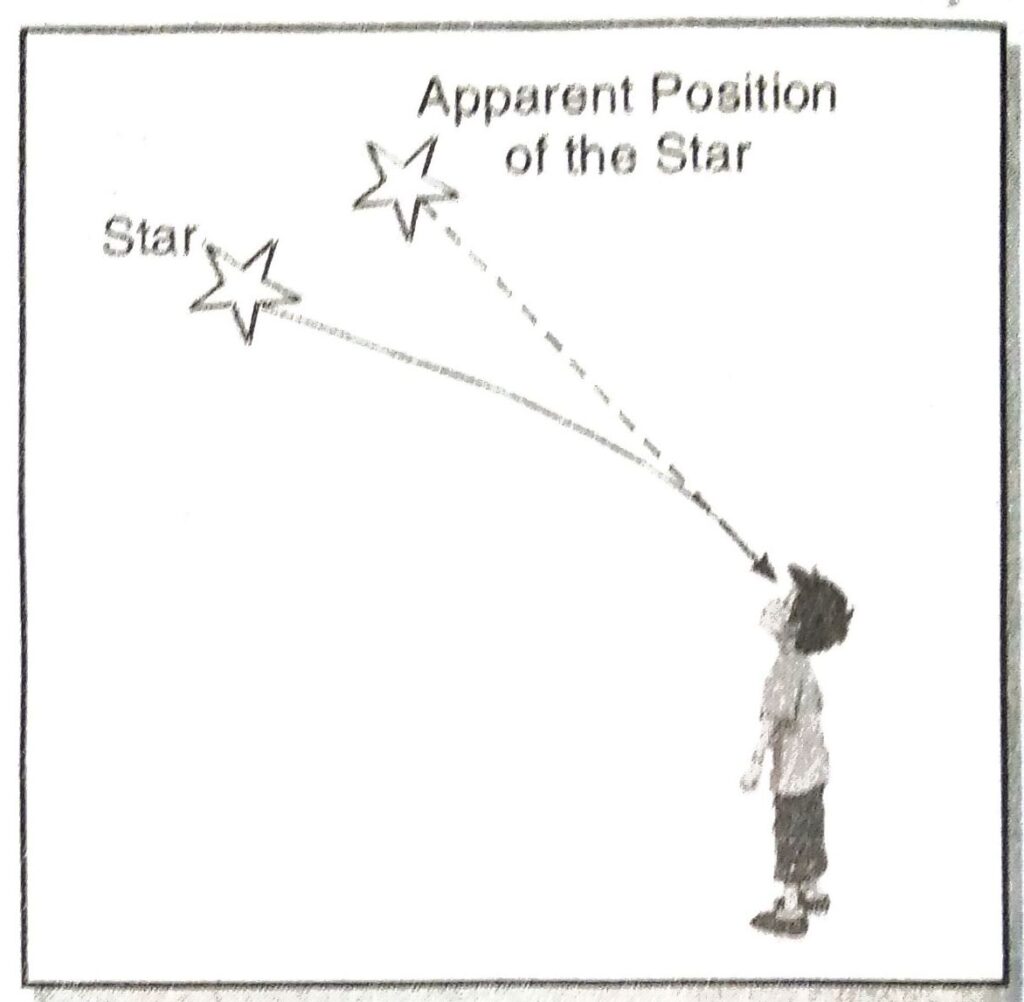
Since planets are quite close to the earth in comparison with the stars, they do not act as point sources but behave like extended sources. Planets may be considered as collection of a large number of point-sized sources of light. The total net deviation in amount of light entering our eyes from different point sources is zero. Therefore, there is no net twinkling of planets.
Q. 11. Why does the sun appear reddish in the morning (as well as in evening)?
Ans. Earth is surrounded by envelope of gases called atmosphere. At the time of sunrise (or at sunset), light has to travel greater distance [AB at sunrise and BC at sunset] through the atmosphere to reach us than what it covers, when sun is over-head at noon [It has to travel only DB].
The wavelength of blue colour is about half that of red, blue light is scattered nearly 24 = 16 times more than red colour of sunlight. As a result, the sun appears red at sunrise or at unset due to negligible scattering of red colour of light.
Q. 12. Why does the sky appears dark instead of blue to an astronaut ?
Ans. The atmosphere exists only upto some height. At high altitudes, there is no atmosphere to scatter sun light. The sky, therefore, appears to be perfectly black to astronauts.
Q. 13. State two affects caused by refraction of light.
Ans. Refer Q.No. 10 & 11 above.
Q. 14. Why do stars twinkle? Why does sun appear reddish early in the morning ?
Ans. Twinkling of the star is due to refraction of light from stars through atmosphere. The stars emit their own light. The light coming from the stars on entering the earth’s atmosphere undergoes refraction continuously at each layer of atmosphere having different density, before it reaches the earth. The stars are very much distant objects and may be considered as point sources. The refractive index of the air changes from time to time due to change of density of air. Due to change of the optical density of earth’s atmosphere, the path of rays from stars continuously changes. The apparent positions of the stars continuously change due to change in refractive index of the atmosphere. Thus the stars appear to twinkle.
Since planets are quite close to the earth in comparison with the stars, they do not act as point sources but behave like extended sources. Planets may be considered as collection of a large number of point-sized sources of light. The total net deviation in amount of light entering our eyes from different point sources is zero. Therefore, there is no net twinkling of planets.
Appearance of Sun as reddish in the morning. Refer Q. 11.
ADDITIONAL IMPORTANT QUESTIONS
LONG ANSWER TYPE QUESTIONS
Q. 1. With the help of a well labelled diagram, explain the construction and working of the human eye.
Or
Explain the structure and working of human eye.
Ans. Human eye is the most remarkable and most delicate natural optical instrument. The main parts of the eye are given below :
STRUCTURE OF THE EYE
The human eye consists of nearly spherical ball of about 2.5 cm in diameter.
1. Sclerotic. Its outermost coating is made of a tough and opaque white substance known as SCLEROTIC. It holds the eye ball in position and protects it from external injuries.
2. Cornea. Front portion of sclerotic is transparent and is known as CORNEA. It consists of a transparent substance. The outer surface of cornea is convex in shape. It allows the light to enter eye.
3. Choroid. There is a layer of black tissues, below sclerotic, called CHOROID. It serves to absorb any stray light and thus avoids blurring of the image by reflection from the eye-ball.
4. Iris. In front of eye, choroid merges into a coloured diaphragm known as iris with a hole in the middle called PUPIL. The iris corresponds to shutter in the camera. By means of involuntary muscle control, it regulates the amount of light entering the eye.
5. Eye Lens. It is a double convex lens made of transparent refracting tissues. The lens is held in position with the help of CILIARY MUSCLES. The ciliary muscles adjust the curvature of eye lens and hence its focal length to focus the images of all objects on retina.
The lens divides the eye-ball into two chambers-(i) the front chamber called anterior chamber and (ii) other between lens and the retina called posterior chamber. Anterior chamber is filled with a fluid, called AQUEOUS HUMOUR while the posterior chamber is filled with a jelly-like substance called VITREOUS HUMOUR.
6. Retina. The innermost coating of the eye, covering the rear of inner surface, is a very delicate membrane called the RETINA. It behaves like a screen as photographic film does in a camera on which image of object is formed.
The sensation of vision in the retina is carried to the brain by a nerve called OPTICAL NERVES.
7. Yellow Spot. The most sensitive part of retina is known as the YELLOW SPOT.
8. Blind Spot. The point where the optical nerve enters the eye is totally insensitive to light and is known as the BLIND SPOT.
9. Eye-lids. Eye Lids are provided to control the amount of light falling on the eye. Eyelids also protect the eyes from dust etc.
Q. 2. Describe briefly the various defects of vision.
Ans. Defects of Vision. There are number of defects from which human eye may suffer. Some of the major defects are given below :
1. Myopia or shortsightedness. Refer Q. 3.
2. Hypermetropia or Long-sightedness. Refer Q. 4.
3. Presbyopia. With ageing, power of accommodation of eye decreases and a person cannot see comfortably and distinctly without proper eye glasses. This defect of eye is called presbyopia. This defect of eye is due to weakening of the ciliary muscles and decrease of flexibility of the eye lens.
4. Astigmatism. A person suffering from this defect cannot simultaneously focus on both horizontal and vertical lines. This defect is usually due the cornea not being perfectly spherical. Consequently it has different curvatures in vertical and horizontal planes. This defect can be corrected by using eye glasses fitted with cylindrical lenses.
5. Cataract. In old age sometimes the crystalline lens of eye becomes milky and cloudy. This condition of eye is called cataract. The result of this condition is partial or complete loss of vision.
Removal of Cataract. It can be removed by surgery.
Q. 3. A person is not able to see far off objects clearly. From which defect of the eye the person is suffering ? How to correct this defect?
Or
A person cannot see objects beyond 1.5 m distinctly. What type of lens should he use to restore proper vision ?
Or
Define myopia. How is it corrected ?
Or
What is Myopia ? Draw the diagram and show how it is corrected ?
Ans. Myopia or Short Sightedness. A person with myopic eye can see the near objects clearly but cannot see far off objects. The person suffering from myopia or short-sightedness has far point nearer than infinity. In normal eye, the far point is at infinity. The rays coming from distant object (at infinity) get focussed on retina [Fig. (a)].
Causes of Defect. The defect myopia arises due to either :
(i) the length of eyeball is elongated (becomes longer than normal)
(ii) the focal length of eye lens has decreased.
Due to either or both the causes, the eye is not able to focus the rays from distant object at retina [Fig. (b)]. Focussing is there at a point O in front of retina. Therefore, the image formed on retina is blurred.
The defective eye is however able to focus the object upto its far point [Fig. (c)].
(b). Defective eye (eye-ball is enlarged), or focal length decreased, cannot focus rays from infinity at retina.
(c). Defective eye. Far point is nearer than infinity. When the object is at far point F, the image is formed on retina.
(d) Corrected eye. Concave (or a divergent) lens diverges the parallel rays coming from infinity to an extent that they appear to diverge from F. They get focussed at retina.
Correction of Defect
We have observed that the defective eye has not been able to focus less inclined rays [Fig. (b)] but has been able to focus more inclined rays [Fig.(c)].
To correct this defect, a concave or a divergent lens of appropriate focal length is placed in front of the eye so that parallel rays coming from infinity appear, after refraction through the lens, to come from the far point when eye is unaccommodated [Fig. (d)]. These parallel rays from a distant object shall be brought to focus upon the retina. Obviously, the focal length of such a lens is equal to the distance of the far point from the eye.
Q. 4. A person is unable to read a book properly. From which defect is he sufferingHow to correct this defect?
Or
What is hypermetropia ? How can it be corrected ?
Or
What is Hypermetropia ? Draw the diagram and show how it is corrected ?
Ans. The person is suffering from hypermetropia or long-sightedness. Hypermetropia or Long sightedness. A long-sighted person can see distant objects clearly, but cannot see distinctly objects lying closer than a certain distance. Thus, he cannot see clearly an object lying at 25 cm which is the least distance of distinct vision for a normal eye. His far point is farther from the eye than 25 cm, say at 75 cm or so.
Causes of hypermetropia. This defect is caused due to either :
(i) the size of the eye-ball becoming too short.
(ii) the lens becoming too thin, so that its focal length becomes abnormally large.
Fig. (a). Normal Eye. It is able to focus the rays from normal near point (25 cm from eyes).
Fig. (b). Defective Eye. Due to eye ball getting short or an increase in focal length of eye lens, the rays do not focus on retina.
Fig. (c). Defective Eye is able of form image at the retina when object is moved from N to N’ the near point of defective eye.
Fig. (d). Corrected Eye. convex lens of suitable focal length converges the rays to match those coming from N.
Normal eye is able to focus on retina the rays emerging out from N [Fig. (a)]. However, the defective eye is not able to focus the rays from near point of normal eye i.e. N [Fig. (b)].
It can focus the rays from near point of defective eye i.e., N’ [Fig. (c)]. From Fig. (b) and (c), we conclude that more inclined rays [Fig. (b)] are not focussed on retina whereas less inclined rays from N’ get focussed on retina.
Correction of hypermetropia. This defect is corrected by placing a convex or a converging lens of suitable focal length before the eye so that the rays diverging from N after refraction, appear to come from the near point N’.
Q. 5. Explain the refraction of light with the help of a Glass Prism.
Ans. Refraction of Light through Glass Prism. Let ABC be the section of equilateral glass prism. Consider an incident ray PQ striking obliquely the face AB of the prism. This ray is travelling from air medium to glass medium. Due to change of medium, it suffers refraction and bends, towards the normal NN’ drawn at the point of incidence Q and moves along the path QR. Here QR is the refracted ray. Thus, the path of the ray deviates through ∠TOR called the angle of deviation. The refracted ray QR going from glass (denser medium) to air (rarer medium) again suffers refraction and is refracted at R and bends away from the normal NN” along the path RS called emergency ray. The angle that the emergent ray makes with the normal N₁N” is called angle of emergence. On measuring the angles i, e, D and A, we can show
∠A + ∠D = ∠i + ∠e where
∠A = ∠BAC is called angle of the prism
∠D = ∠TOR is called angle of deviation
∠i = ∠PQN’ is called angle of incidence
∠e = ∠SRN” is called angle of emergence
Q. 6. Explain the phenomenon of dispersion of light with the help of glass prism. What is the cause of dispersion ?
Or
What is dispersion of light ?
Or
Explain the phenomenon of dispersion of light by a glass prism. Draw the diagram also.
Or
Explain the dispersion of light through a glass prism.
Ans. Dispersion of light. If a beam of white light falls upon one of the faces of the prism, it is seen in the other face of the prism that not only light is deviated from its path but light is split up into its seven constituent colours. These colours are red, orange, yellow, green, blue, indigo and violet. Deviation suffered by red colour is least and maximum deviation is suffered by violet.
The phenomenon of splitting of white light into its constituent colours is called dispersion of light and the band of seven colours obtained on the screen is called a spectrum [Fig. (a)].
Cause of Dispersion. Light rays of different colours and of different wavelengths travel in air or vacuum with the same speed. However, they travel with different speeds in a refractive medium (say glass). Violet coloured ray travels with least speed and red ray with maximum speed. So different coloured rays bend to different extent on entering glass giving rise to the phenomenon of dispersion.
Q. 7. Describe an experiment to show that different colours of white light can be recombined to form white light.
Ans. To show that colours are not produced by the prism but are present in white light itself and the prism only separates these colours, Newton isolated a particular colour say green. He placed another prism in the path of green beam. No further splitting of colour took place. The light was only deviated further. It clearly showed the prism just separates, a large number of colours coming together as white [Fig. (b)].
If a second prism of exactly of same angle with its refracting edge opposite to the first is placed as shown, it is found that it results in white light again [Fig. (c)]. The second prism deviates the rays in opposite direction. Thus dispersion produced by one prism is cancelled by the second similar prism placed in the opposite direction.
Fig. (c). If a similar inverted second prism is placed, seven colours recombine spectrum colours into white light.
If the second prism is placed in the same way as the first, the coloured rays are again obtained on the screen but these are more spread [Fig. (d)].
Fig. (d). When second prism is placed in same way, the coloured beams are further spread.
Q. 8. Describe Newton’s disc experiment to show that white light is composed of seven spectrum colours. Why seven colours combine to give almost white but not perfectly white ?
Ans. Newton’s Colour Disc. White light consists of seven colours. This can easily be proved by Newton’s colour disc. Take a circular disc of card board and divide it into seven sectors radially so that the area of each sector corresponds to the quantity of constituent colours of light. These sectors are then painted with colours. On rotating the disc rapidly about an axle passing through its centre, all the colours mix and a sensation of almost white light is produced on the retina due to persistence of vision.
Seven colours combine to give almost white but not perfectly white. It is because we have used pigment colours instead of spectrum colours, the disc will not appear pure white but will give a dull appearance.
Q. 9. What is a prism ? How can you show experimentally that ;
∠A + ∠D = ∠i + ∠e
Ans. Prism. A glass prism consists of a transparent and refracting medium having two triangular and three rectangular lateral surfaces.
Experiment. Fix a white sheet of paper on a drawing board. Place a glass prism ABC on paper and draw its boundary. Draw a line PE falling obliquely on face AB of the prism and fix two pins P and Q on it. See from face AC of the prism and fix two more pins R and S so that P, Q, R, S all appear to be in same straight line.
Now remove pins and the glass prism. Extend PE towards EK. Join R, S and produce back to meet EK at G. Draw OEN perpendicular to AB and HFO perpendicular to AC. Then PE is incident ray, EF refracted ray and FS, the emergent ray. ∠PEN = ∠i is the angle of incidence, ∠HFS = ∠e, the angle of emergence and ∠KGF = ∠D, the angle of deviation. If ∠BAC = ∠A, the angle of prism. Measure ∠i, ∠e, ∠A and ∠D. Now calculate ∠i + ∠e and ∠A + ∠D. You will find that these are equal.
∴ ∠A + ∠D = ∠i + ∠e
Q. 10. What is meant by scattering of light ? Explain Tyndall effect. Give a few illustrations of scattering of light.
Ans. The path of beam of light becomes visible when it passes through space containing smoke, tiny water droplets, suspended dust particles. The path of light is visible when it pass through a medium the size of whose particles are comparable to wavelength of light.
Fig. An arrangement for observing scattering of light in colloidal solution
Colour of scattered light depends upon the size of scattering particles. Very small particles scatter blue light while larger particles scatter light of longer wavelength.
SHORT ANSWER TYPE QUESTIONS
Q. 1. Why the eye lens is not perfectly solid ?
Ans. Had it been solid, its focal length would have been fixed. In that case, we would not have been able to focus objects lying at different distances.
Q. 2. What is name of defect of eyes due to loss of elasticity of eye-lens ? How is it corrected?
Ans. It is called presbyopia. It can be corrected by using two separate spectacles one for near vision and the other for distant vision.
Q. 3. What is the function of retina in human eye?
Ans. When light falls on retina, it excites rods and cones. The electric pulses produced are conveyed to brain through optic nerve.
Q. 4. What is far point ?
Ans. Far point. It is a distant point upto which the eye can see clearly.
Q. 5. What is accommodation ?
Ans. Accommodation. It is the distance between near point and far point. The eye is able to adjust its focal length in such a way that it is able to focus any object lying between near point and far point.
Q. 6. What part of the eye can be donated after death?
Ans. One can live in the eyes of others even after one’s death. The cornea from dead body is removed within 6 hours of the death and transplanted in the eyes of blind person. His opaque cornea is replaced by transparent cornea of dead donar.
Q. 7. What is the function of ciliary muscles in the eye ?
Ans. Ciliary muscles pull/push the lens and thereby change its focal length in order to focus objects lying at different distances from the eye.
Q. 8. What is astigmatism ? How is it corrected ?
Ans. The surface of the cornea is nearly spherical. Sometimes, its curvature gets distorted and becomes more in one plane than in the other, so that the focal length of the eye in the two planes at right angles to each other becomes different.
This defect is corrected by the use of suitable cylindrical lens.
Q. 9. What are rods and cones? Give their action.
Ans. Sensitive portion of retina has large number of cells; one rod shaped and other cone shaped. Rod-shaped cells are sensitive to the intensity or brightness of the light whereas coneshaped cells are sensitive to colours.
Q. 10. How does eye focus objects at different distances? What is range of vision ?
Ans. How the Eye Focusses? In eye, the distance between lens and the retina remains the same, while crystalline lens automatically changes its focal length (by changing its curvature due to pull or push of ciliary muscles) according to the distance of the object so as to bring the image to a sharp focus upon the retina.
While seeing the far off objects, eye lens becomes thinner and flatter so as to increase its focal length.
To see the objects close to the eyes such as printed page, the lens becomes thicker so as to decrease its focal length. The process by which the eye can adapt itself to see objects at different distances is called accommodation.
Range of Vision. The most distant point upto which the eye can see is called the far point. For normal eye, far point is infinity. The point at the shortest distance from the eye upto which the eye can see clearly is known as the near point. The distance between far and near points is called range of vision.
Q. 11. What happens whens elasticity of the eye lens is reduced to zero ?
Ans. Decrease of Elasticity of Lens. In normal eye, the change in the power of the eye lens for seeing far and near points is very large. As the person grows older, the power of accommodation gradually decreases. A stage may even reach when ciliary muscles lose their power and crystalline lens become much less elastic, so that the power of accommodation is almost zero.
Q. 12. Why do we observe random wavering or flickering of the objects near a fire or on very hot day?
Ans. This is due to refraction. Air above fire becomes hotter than the air further up. Hotter air is lighter than cold air above it. Refractive index of the hotter air is slightly less than that of cooler air. Since the density of air does not remain the same, the apparent position of the object as seen through hot air fluctuates. Wavering is therefore the effect of atmospheric refraction.
Q. 13. Why we see a rainbow just after rains ?
Ans. Rainbow is caused by dispersion of white sun light by tiny water droplets present in the atmosphere. Water droplets act as tiny prisms. They refract and disperse the incident sunlight, then reflect it internally and finally refract it again when it comes out of raindrop. Due to dispersion of light and internal refraction, different colours reach the eye of the observer. Rainbow is always formed in a direction opposite to that of the sun.
Q. 14. How refraction of light elongates the length of day?
Or
Why does day appear longer than actually what it is due to refraction of light ?
Ans. The sun is visible a few minutes earlier than it actually rises above horizon. It happens because as we go up from the earth, the density of air layers decrease. The rays from sun S keep on bending towards normal till it enters the eye. Therefore, the sun appears to be at S’ (above horizon) although it is at S (below horizon). Thus the sun appears about two minutes earlier than actually when it should be.
For the same reason, the sun appears to set two minutes later than the actual. Hence the day appears to be about 4 minutes longer than what it is.
For the same reason explained above, the stars appear higher than their actual position as shown in Fig. (b).
Q. 15. Distinguish between Myopia and Hypermetropia.
Or
Give the difference between Myopia and Hypermetropia. Draw the necessary diagram also.
Or
Describe Myopia and Hypermetropia with relevant diagrams.
Ans. Myopia or short-sightedness. It is defect in eyes due to elongation of eye ball or decrease the focal length of eye lens. A person suffering from this defect can see nears objects clearly but cannot see farther objects clearly.
To correct this defect, a divergent (say concave) lens of suitable power is used by patient.
Hypermetropia or long-sightedness. It is due to the shortening of eyeball or increase in focal length of the lens. A person suffering from this defect cannot see nearer objects clearly but can see distant objects clearly.
To correct this defect a convergent (say convex) lens of suitable power is used.
(b) Corrected eye. A convex lens of suitable focal length converges the rays to match those coming from N.
Q. 16. Why does the colour of the sky appear blue ? Also tell how it would appear in the absence of earth’s atmosphere ? Explain in brief.
Ans. The molecules of air/gases and other fine particles in the atmosphere have smaller size than the wavelength of visible light. These particles are therefore, more effective in scattering light of shorter wavelengths at blue and than light of longer wavelength at the red end. Thus, blue colour of the sky is due to scattering of sunlight by fine particles. In the absence of earth’s atmosphere no scattering of light can occur. So, the sky appears black in that case.
Q. 17. A star appears on the horizon. What is the true position of the star ? Explain with diagram.
Ans. True position of star is below the horizon. Incident rays from star, travel through earth’s atmosphere and reach observer’s eye. These incident rays travel from rarer to denser atmopshere so that they bend towards the normal. Thus, they appear to come from a different position slightly higher than the true position.
Q. 18. Define Human Eye. Draw its labelled diagram.
Ans. Human Eye. The human eye is a natural optical instrument that reacts to light and helps us to see the surrounding objects. As a conscious sense organ, the human eye allows vision; rod and cone cells allow light perception and vision.
Q. 19. Define Dispersion of light. Add a short note on Monochromatic and polychromatic light.
Ans. Dispersion of light. If a beam of white light falls upon one of the faces of the prism, it is seen in the other face of the prism that not only light is deviated from its path but light is split up into its seven constituent colours. These colours are red, orange, yellow, green, blue, indigo and violet. Deviation suffered by red colour is least and maximum deviation is suffered by violet.
The phenomenon of splitting of white light into its constituent colours is called dispersion of light and the band of seven colours obtained on the screen is called a spectrum [Fig. (a)].
Cause of Dispersion. Light rays of different colours and of different wavelengths travel in air or vacuum with the same speed. However, they travel with different speeds in a refractive medium (say glass). Violet coloured ray travels with least speed and red ray with maximum speed. So different coloured rays bend to different extent on entering glass giving rise to the phenomenon of dispersion.
Monochromatic light. Light made up of only one single component (colour) i.e. it consists of single wave length is called monochromatic light.
Example. Laser beams and yellow light of sodium lamp is almost monochromatic light.
Polychromatic light. It is a light made of many colours or spectrum of rays with broad range of wavlengths and frequencies.
Example. Normal sunlight or light of electric bulb is a polychromatic light.
Q. 20. Define the term Impure spectrum.
Ans. Impure Specturm. A spectrum in which there is overlapping of different colours is called an impure spectrum. In other words, in an impure spectrum, the colours are not distinct but they overlap (fall one over the other).
Q. 21. Define the term Pure Spectrum.
Ans. Pure Spectrum. The meaning of Pure Spectrum is a spectrum in which the dispersion is highly discriminative so that at each point the light is practically monochromatic.
Q. 22. Why is the colour of the clear sky blue ?
Ans. Blue colour of the clear sky. The molecules of air gases and other fine particles in the atmosphere have smaller size than the wavelength of visible light. These particles are, therefore, more effective in scattering light on shorter wavelengths at blue than light of longer wavelength at the red end. Thus the blue colour of sky is due to scattering of light by fine particles.
Q. 23. Define the term Myopia.
Ans. Myopia. With this defect of eye a person can see near objects clearly but cannot see far off objects. The person suffering from myopia has far point nearer than infinity.
This defect of eye can be corrected by using spectacles mounted with concave lens.
Q. 24. Define the term Hypermetropia.
Ans. Hypermetropia. With this defect of eye a person, can see distant objects very clearly but can not see distinctly objects lying closer to the eye.
This defect of eye can be corrected by using spectacles mounted with convex lens.
Q. 25. On passing through a glass prism white light splits into its seven constituent colours. What is the phenomenon called and how it is caused ?
Ans. When white light passes through a glass prism, it splits up into its seven constituent colours denoted by ‘VIBGYOR’. This phenomenon is called Dispersion.
Cause of Dispersion of light. White light is composed of seven constituent colours each colour having different wavelength. The speed of light is different for different colours. So light of each colour bends by different angle. Red colour bends the least while violet colour bends the most.
NUMERICAL PROBLEMS
Q. 1. A person suffering from short sightedness can see clearly only upon a distance of 2 metres. Find the nature and power of the lens required to correct the vision.
Sol.
A concave lens is used to correct the vision of a person suffering from short sightedness (myopia).
υ = – 2m
u = ∞
Q. 2. A person can not see clearly objects beyond a distance of 1.2 m. Name the defect of vision he is suffering from. What would be the power of correcting lens used to restore proper vision ?
Sol.
Since a person can see clearly only near objects (upto a distance of 1.2 m only) whereas normal human eye can see even distant objects (upto infinity), therefore, the defect of vision is myopia.
Q. 3. A person wears spectacles of power – 2.5 D. Name the defect of vision he is suffering from. Draw the ray diagram for (i) the defective eye, (ii) its correction after using a suitable lens.
Sol.
Since the power of the lens is negative, therefore, the lens used in spectacles is concave lens.
The defect of the eye is Myopia (or short sightedness)
Q. 4. The near point of a person suffering from hypermetropia is 75 cm. Calculate the focal length and power of the lens required to enable him to read the newspaper which is kept at 25 cm from the eye.
Sol.
Q. 5. The near point of a myopic eye is 1 m. Find the power of the lens required to correct this defect. Assume that near point of the normal eye is 25 cm.
Sol.
Positive sign (+) indicates that the lens is convex.
Q. 6. A person cannot see objects beyond 1.5 m distinctly. What type of lens should be used to restore proper vision ?
Sol.
He should use concave or divergent lens of focal length – 1.5 m and power – 0.67 D.
Q. 7. The near point of a hypermetropic person is 50 cm. What should be the focal length and power of the lens used by him if he wants to read a newspaper placed 20 cm away ?
Sol.
NUMERICAL PROBLEMS FOR PRACTICE
Q. 1. A boy uses spectacles of focal length – 60 cm. Name the defect of vision he is suffering from. Which lens is used for the correction of this defect? Compute the power of this lens.
Q. 2. Least distance of distinct vision of a long-sighted person is 40 cm. He wishes to reduce it to 25 cm by using spectacles. Find the power and nature of the lens used by him.
Q. 3. A person cannot see objects beyond 1.2 m distinctly. What should be the type of the corrective lens used to restore proper vision ?
VERY SHORT ANSWER TYPE QUESTIONS
Q. 1. What is the function of sclerotic in human eye?
Ans. Sclerotic is to provide a solid shape to eye and protect it from external injuries.
Q. 2. What is the function of ciliary muscles in human eye ?
Ans. Ciliary muscles help the eye to change its focal length by adjusting its curvature.
Q. 3. What is the function of rods on the retina ?
Ans. Rods are sensitive to light. More the intensity of light, more are they excited.
Q. 4. What are cones ?
Ans. Cones on retina are sensitive to different colours. If cones are absent or insufficient, the person is colour blind.
Q. 5. Why chickens come out late in the morning and return early in the evening ?
Ans. Chickens have very few rods on the retina, hence they are able to see only in bright light and not in dim-light.
Q. 6. Why cats / bats are able to see at night ?
Ans. They have very large number of rods on retina. Hence they are able to see even if there is very small amount of light.
Q. 7. Colour of eyes depend upon colour of which part of eye ?
Ans. It depends upon the colour of iris.
Q. 8. What is basic cause of colour blindness ?
Ans. It is due to no or insufficient number of cones on the retina.
Seeing sun or seeing towards it during solar eclipse may cause colour blindness.
Q. 9. What is presbyopia ? How can it be corrected ?
Ans. Presbyopia. This defect of eye is due to decrease in elasticity of eye-lens. The near point shifts away from the eye and the far point shifts near the eye. Due to this, a person suffering from. this is not able to see near as well as far off objects clearly.
It can be corrected by using bifocal lenses or using two spects, one with converging (say convex) lens for reading purpose and one with diverging (say concave) lens for seeing distant objects.
Q. 10. What is the cause of astigmatism ?
Ans. It is due to deformation in curvature of the cornea.
Q. 11. What type of lens we wear if we are suffering from myopia ?
Ans. We often use convexo-concave lens. We rarely use concave lens as is usually supposed.
Q. 12. What type of lens is usually used by a hypermetropic person?
Ans. He uses a converging lens which is usually concavo-convex lens.
Q. 13. Is focal length of eye lens fixed ?
Ans. No. Eye lens has variable focal length. Focal length varies due to action of ciliary muscles.
Q. 14. What is approximate power of the eye ?
Ans. It is nearly 20 D.
Q. 15. Expand the Acronym ‘VIBGYOR’.
Ans. V → Violet
I → Indigo
B → Blue
G → Green
Y → Yellow
O → Orange
R → Red.
Q. 16. Define Accommodation choice of an eye.
Ans. Accommodation choice of eye. It is the ability of the eye lens to adjust its focal length to see various objects lying at different distances. The minimum distance upto which a normal eye can see clearly is called near point. For normal eye, near point is about 20 cm. The maximum distance upto which the eye can see clearly is called far point. The distance between near point and far point is also called accommodation.
Q. 17. What is the best reflector of Light ?
Ans. Silver is the best reflector of light.
MULTIPLE CHOICE QUESTIONS
Select the correct answer out of the four alternatives :
1. Most sensitive part of retina is called :
(A) black spot
(B) cornea
(C) yellow spot
(D) blue spot.
Ans. (C) yellow spot
2. Power of a lens is 5D, its focal length is :
(A) 20 m
(B) 2 cm
(C) 0.2 m
(D) none of these.
Ans. (C) 0.2 m
3. Most insensitive part of the eye is called:
(A) black spot
(B) yellow spot
(C) cornea
(D) blue spot.
Ans. (A) black spot
4. Focal length of the eye lens can be adjusted by action of:
(A) ciliary muscles
(B) choroid
(C) optical nerves
(D) retina.
Ans. (A) ciliary muscles
5. When light rays enter the eye, most of the refraction occurs at :
(A) crystalline lens
(B) iris
(C) outer surface of cornea
(D) pupil.
Ans. (A) crystalline lens
6. Amount of light entering the eye depends upon size of :
(A) pupil
(B) iris
(C) cornea
(D) eyelids.
Ans. (A) pupil
7. The colour of eye of a person is alloted on the basis of the colour of his :
(A) pupil
(B) retina
(C) iris
(D) aqueous humour.
Ans. (C) iris
8. Fovea centralis is a point inside the eye which is :
(A) not sensitive to light
(B) the most sensitive to light
(C) used to convey the message to retina
(D) useless part.
Ans. (B) the most sensitive to light
9. Distance of distinct vision of a normal eye is :
(A) 25 m;
(B) 2.5 m;
(C) 25 cm;
(D) 2.5 cm.
Ans. (C) 25 cm;
10. Accommodation of normal eyes is from :
(A) 5 cm to 15 cm
(B) 15 cm to 1 m
(C) 1 m to 3 m
(D) 20 cm to infinity.
Ans. (D) 20 cm to infinity.
11. Far point of a person is 4 m, the power of lens required to see distant object clearly is:
(A) – 0.25 D
(B) + 0.25 D
(C) zero
(D) infinity.
Ans. (A) – 0.25 D
12. When an object is placed beyond centre of curvature of a cancave mirror, the image is formed:
(A) beyond C;
(B) between C and F;
(C) at F;
(D) at infinity.
Ans. (B) between C and F;
13. Colour of light which deviates maximum through prism is :
(A) red
(B) green
(C) violet
(D) blue.
Ans. (C) violet
14. Message of image formation is conveyed to brain by :
(A) cornea
(B) yellow spot
(C) optical nerve
(D) none of these.
Ans. (C) optical nerve
15. We can see the sun before the actual rise by about:
(A) 5 min
(B) 2 min
(C) 5 s
(D) 5 s.
Ans. (B) 2 min
16. Human eye form image of object at :
(A) cornea
(B) retina
(C) pupil
(D) Iris.
Ans. (B) retina
17. Defect of eye which cannot be corrected by using spectacles is :
(A) Myopia
(B) Presbyopia
(C) Cataract
(D) Hypermetropia.
Ans. (C) Cataract
18. In retina, the cells that respond to colour are:
(A) Cones
(B) Rods
(C) Both Rods and Cones
(D) None of the above.
Ans. (A) Cones
19. In retina the cells that respond to the intensity of light are :
(A) Rods
(B) Cones
(C) Both Cones and Rods
(D) None of the above.
Ans. (A) Rods
20. The information about the image formed on the retina of eye is carried to brain by :
(A) Cornea
(B) Optic nerves
(C) Ciliary muscles
(D) iris.
Ans. (B) Optic nerves
21. Astigmatism can be corrected by using spectacles of:
(A) Convex lens
(B) Concave lens
(C) Cylindrical lens
(D) Bifocal lens.
Ans. (C) Cylindrical lens
22. The phenomenon of splitting of white light into seven constitutent colours is called :
(A) Refraction
(B) Dispersion
(C) Reflection
(D) None of these.
Ans. (B) Dispersion
23. Which of the following colours has the maximum wavelength ?
(A) Violet
(B) Red
(C) Yellow
(D) Blue.
Ans. (B) Red
24. Twinkling of stars is due to :
(A) Dispersion
(B) Refraction
(C) Reflection
(D) None of the above.
Ans. (B) Refraction
25. The white tough layer of the eye is called :
(A) Sclera
(B) Choroid
(C) Cornea
(D) Conjunctiva.
Ans. (B) Choroid
26. The ciliary muscles of the eye lens help eye to adjust its :
(A) Retina
(B) Focal length
(C) Optic nerve
(D) Pupil.
Ans. (B) Focal length
27. The entry of light into the eye is controlled by:
(A) Retina
(B) Pupil
(C) Iris
(D) Vitreous Humour.
Ans. (B) Pupil
28. Which of the following acts as a light sensitive screen in the Human eye?
(A) Vitreous Humour
(B) Retina
(C) Cornea
(D) Optic Nerve.
Ans. (B) Retina
29. The size of the pupil in the Human eye is controlled by :
(A) Cornea
(B) Retina
(C) Iris
(D) Lens.
Ans. (C) Iris
30. The function of iris is :
(A) to control the amount of light entering the eye
(B) to control the size of pupil
(C) to form the image on retina
(D) to change the focal length of lens.
Ans. (B) to control the size of pupil
31. A person cannot see the objects beyond 1.2 m distinctly. The corrective lens used to restore proper vision is :
(A) concave lens
(B) convex lens
(C) cylindrical lens
(D) bifocal lens.
Ans. (A) concave lens
32. The nature of image formed by an eye is :
(A) Real and inverted
(B) Real and erect
(C) Virtual and inverted
(D) Virtual and erect.
Ans. (A) Real and inverted
33. The disease caused due to weakening of ciliary muscles and diminishing of flexibility of lens is :
(A) Myopia
(B) Presbyopia
(C) Hypermetropia
(D) Both myopia and hypermetropia
Ans. (B) Presbyopia
34. A person cannot see the far off objects. The nature of the corrective lens used to restore proper vision is :
(A) Concave lens
(B) Convex lens
(C) Bifocal lens
(D) None of these
Ans. (A) Concave lens
35. A small circular opening in the centre of the Iris is:
(A) Cornea
(B) Pupil
(C) Blind spot
(D) Retina.
Ans. (B) Pupil
36. The colour of pupil is :
(A) White
(B) Black
(C) Mixer of Black and white
(D) None of these.
Ans. (B) Black
37. For a normal eye, the far point is at :
(A) 25 cm
(B) 500 cm
(C) 18 cm
(D) Infinity.
Ans. (A) 25 cm
38. The electric pulses from retina to brain are conveyed via :
(A) Ciliary muscles
(B) Optical nerve
(C) Pupil
(D) Iris.
Ans. (B) Optical nerve
39. Some persons can not see the objects from long distances due to the defect called :
(A) Myopia
(B) Hypermetropia
(C) Presbyopia
(D) Astigmatism.
Ans. (B) Hypermetropia
40. Human eyeball has a diameter of about :
(A) 2.3 cm
(B) 3.5 cm
(C) 1.5 cm
(D) 4.5 cm
Ans. (A) 2.3 cm
41. Human eye forms the image of an object at its :
(A) Cornea
(B) Iris
(C) Pupil
(D) Retina
Ans. (D) Retina
42. The human eye forms the image of an object at its :
(A) Cornea
(B) Retina
(C) Iris
(D) Pupil.
Ans. (B) Retina
43. The change in focal length of an eye lens is caused by the action of the :
(A) Pupil
(B) Retina
(C) Iris
(D) Ciliary muscles.
Ans. (D) Ciliary muscles.
44. The colour of the pupil is :
(A) White
(B) Black
(C) Mixer of white and black
(D) None of these.
Ans. (B) Black
45. Formation of rainbow is an example of :
(A) Atmospheric refraction
(B) Scattering of light
(C) Dispersion of light
(D) Both (A) and (B).
Ans. (C) Dispersion of light
